-
Posts
809 -
Joined
-
Last visited
Content Type
Profiles
Forums
Blogs
Gallery
Events
Store
Posts posted by Yankee
-
-
They scare me too. So I generally admire them in period photos only. I have looked at one or two of my reference books on the Knights Cross, and it may help to also post the dimensions and the weight of the cross. However one area of concern, although difficult to tell for sure from the pic, would be that the swastika seems shallow relative to the rim. I would be wary
HI
A guy had the cross lying around for over 30 years. It measures 49 mm & the beaded rim is slightly higher than the swasstika. What troubled me is the hallmarks not being so readable even with a 10X loop. Thanks
0 -
Dear GMIC members
This is way out of my knowledge. Hoping one of the Iron cross collectors can tell me if this is a good example. The markings on the frame is L/3 last number possible 3 not well executed to be certain. 800 as well.
Thanks.
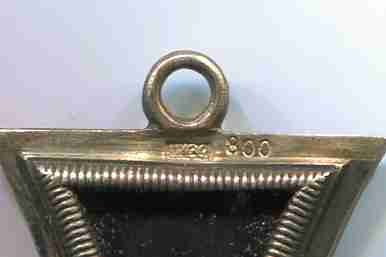
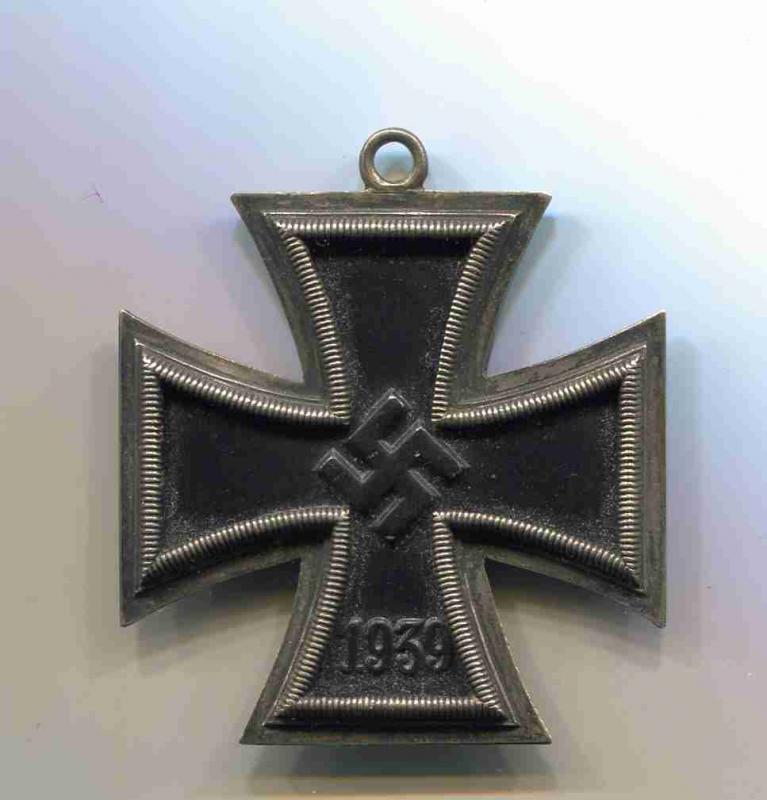

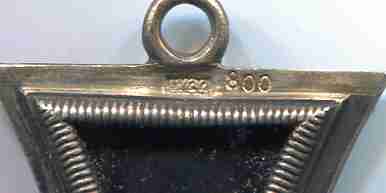
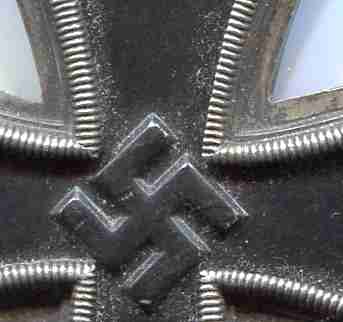 0
0 -
Hope nobody minds that I resurrect this thread since it pertains to the knights cross.
Does anybody have figures on the amount awarded with Lions during its existence or better yet from the 1st half of the 19th century.
Appreciate any help that you can provide.
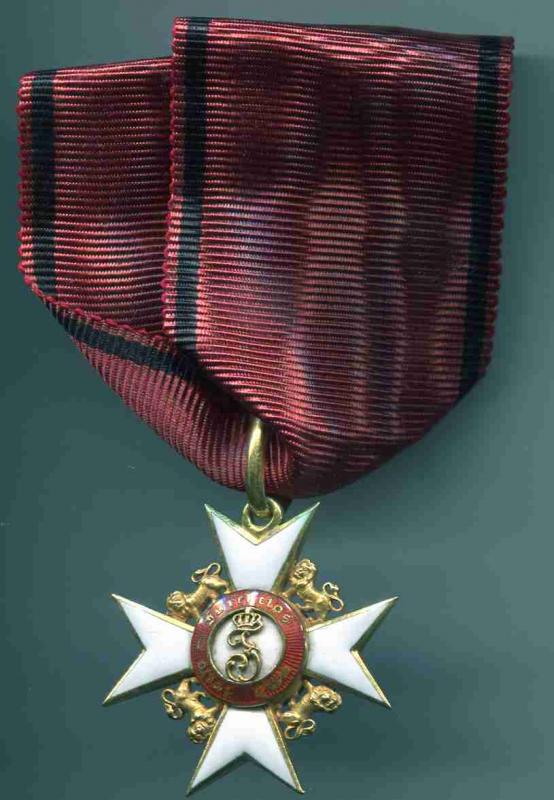
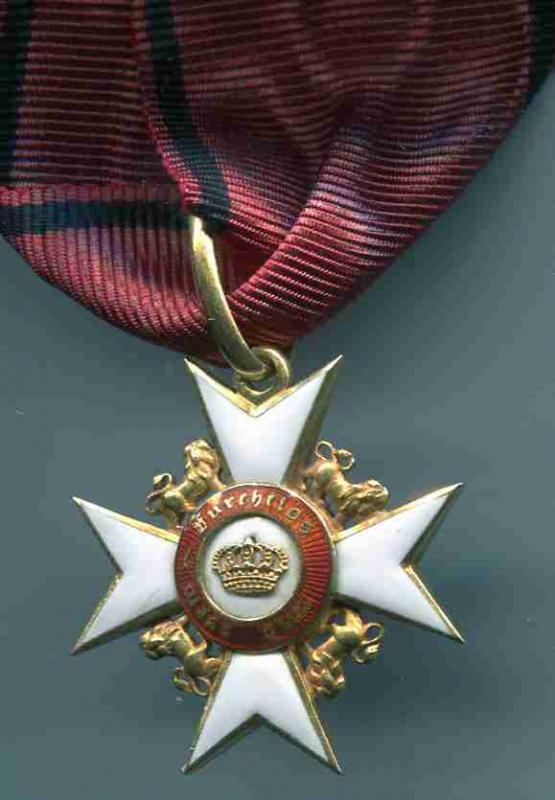 0
0 -
Hi,
This transmittal letter mentions that the Award document will follow at a later date, so I guess it also functions as a preliminary award document until the official document is sent.
If they ever got around to doing the official document I cannot say. With the 1914 EK the Kaiser decided (when he saw the ballon was about to burst) that whatever the guys had, was the final document, that included just about any official notification/Ausweiss/Vorläufige document etc.
Hi Chris
Do you know if the document states the award being a knight 1st class & that he was in the Artillery branch of service with a rank of Captain? Your thoughts on it being genuine. The paper itself is cream color, folded several times with plenty of empty space, a bit worn, however no seal. The seller says it was purchased back in the early 70's from Graf Klenau. Thanks
Sincerely
Brian
Brian
0 -
Hello GMIC members
Can anybody tell me if this is a genuine transmittal document of the Ernst August Order Knight 1st class from 1866 given to an officer of artillery? As I understand there were no award documents for this order due to the fact it was only in existence for a brief period of time. Is it rare? Thanks in advance.
 0
0 -
Now collectors need to be careful to whom we sell.
0 -
Thank you Yankee, all what you wrote is really helpfull. I have never had problems with originality of this decoration, because the production finesse is great. I just wanted to know the possible origin.
It seems so that story about Saxon officer and War of 1866 doesn´t sound very real. I didn´t know that Austrian Rothe won the contract in those years for swords. Austria-Hungary introduced sword for personal bravery against enemy in cases of some decorations (not all of them) only in December 1916. Swords had been placed on band or on the decoration itself (it depends on). So I couldn´t compare swords (from Rothe or anyone else) of some of my Austrian decorations from that period with this Saxon one, because there is nothing to compare. Your information is therefore very helpfull.
To conclude somehow coming what you and others wrote:
It´s original decoration of the 1st. Model in gilded silver which was returened probably after the dead of recipient back to Order´s Chancellory and afterwards bestowed to another recipient in war (1914-1918???) but already with swords (Saxon production with wide guards). It might be also 1900-1912 production with swords added later on for the same recipient for his bravery/meritorious acts in War 1914-1918.
Hi Tifes
I think the first scenario in your concluding remarks would be the more likely of the two. Still there is that possibility that the recipient won the swords at a later date. I didn't know the Austrians instituted some swords almost at the end of the Empire. Have seen the crossed swords on higher grades to the Leopold Order but not to a knight. Same with the Iron Crown but again no swords to the 3rd class badge. Is it accurate to think none were ever awarded in the lower class or they do exist and are just extremely rare? A few of the German States had put in place a complex award system for swords which can be a study in itself.
0 -
Thank you "Yankee" for your opinion. It might be the case indeed. I have also tried to figure out whether the story about Saxon officer and 1866 War might be true.
Hi Tifes
I believe Beau hit the nail on the head. It would be the most likely scenario as stated in post 3. Please note the vast majority of swords given for the 1866 War were Austrian in design. Rothe had won a large contract, there are a few Saxon type from the period but they are rare. The hilt and blade are nearly identical, what sets them apart is the guard. Rothe type is narrow, you can almost think of it being delicate compared to your wider Saxon sword guard. you have a nice genuine badge that one seldom comes across.
0 -
Thank you for all responds. There is a marking "S" on the bottom cross arm and the weight is 27,5g. By "wearer`s copy" I have meant the original decoration of time but privately bought by recipient. This was common practice in Austria-Hungary and all silver made any Order`s decorations are always of this origin. Reason was quite simple. Originally awarded piece was always in 18k. gold and it was well preserved and worn only by unique occasions. So I thought that this might be the same case. Decoration belongs to one of my friends and it is in his private collection. It was acquired many years ago from the very old collection. There is a story behind that decoration was awarded to one Saxon officer who was active combatant in Austrian-Prussian War of 1866. He settled down in Prague afterwards.
This is obviously 1st model with painted central medallion. That one on the attached photos from "Stogieman" is 2nd model with coats of arms put on the medallion. It should be WWI production. The only thing that I cannot figure out by "my decoration" is the fact that it´s made of silver not gold as it was common.
Strange that the Saxon officer would receive a silver- gilt knight 1st class for that time period. As far as I know all early Saxon Civil Merit orders with swds should be in gold. According to Weber, Arnold & Keil all knight 1st class with swds of the 1st type period 1866-1912 were awarded in gold. The amount awarded 197. However knight 1st class of the 1st type without swds were given both in gold & silver-gilt. From 1815 to 1912 1937 were awarded in gold & 356 in silver-gilt. Interesting to note that the silver-gilt ones are more rare and yet they are cheaper. I suspect yours was manufactured around 1900-1912 just no figures on the amount handed out. A cross over between the two types....
0 -
Devastating or devastated? I would imagine that would make a difference.

That works
 0
0 -
Actually with entitlement it was "easy" to get duplicates that were exactly the same... because manufacturers like Godet etc etc WERE the ones providing issue pieces... so a double from them privately purchased was identical. After 1918 was another story, with a lot of those firms out of business.
From Rolls notes, sometimes all it took was a sob story or a personal relationship and "let X's mother keep his Y" happened.
Your guy won the gold versus silver-gilt random lottery... when neither mattered as much as now. Remember when a silver dollar was... one dollar?
That's a really great point. It must have happened all to often where the authorities would bend the rules in allowing the devastating wife or mom keep the insignia. I often come across broken bars and what comes to my mind right away is the work of greedy dealers, unknowing collectors & time itself. Disturbing as this sounds it could be conceivable that the family would be obliged to break apart the bar in order to return the insignia as requested or pay a fee if they had that luxury. I guess there are many circumstances for a broken bar
 but none have a good ending....0
but none have a good ending....0 -
Actually duplicate bars were not that unusual for the sort who "needed" one set for a uniform and another for a civilian frock coat. Some states apparently had departments which did nothing but read obits to snatch awards back--easier for locals than faraway foreigners, obviously. I've trancribed rolls with Inspector Javert-ish clerks' notations down the margin when somebody of a... certain age MIGHT be "coming up for a return" that show tabs were still being kept... "alive xx.xxx.xx in YZ." Depending on the sheer bloody mindedness, some awards were still being demanded into WW2--when the political entity that had bestowed them ceased to exist in 1918. In such cases, that is the only paper trail we find that Recipient A was in fact still above ground many years later!
I'm just floored to learn how far the authorities would go to keep track
 of their awards. I read an article that the orders were extremely costly to manufacture which was probably a strong factor in wanting them back. Was there a change of policy later in the 19th century that some German States would allow the family keep the decoration after the recipient died? It would be correct to think it was only the diplomats, senior military who could afford having a duplicate made at his own expense and they'd be private purchase examples that might differ in quality to the ones supplied by the government. I don't think the authorities would be so generous in issuing a second bar. Thanks0
of their awards. I read an article that the orders were extremely costly to manufacture which was probably a strong factor in wanting them back. Was there a change of policy later in the 19th century that some German States would allow the family keep the decoration after the recipient died? It would be correct to think it was only the diplomats, senior military who could afford having a duplicate made at his own expense and they'd be private purchase examples that might differ in quality to the ones supplied by the government. I don't think the authorities would be so generous in issuing a second bar. Thanks0 -
I forgot to mention-- look at the Ernestine Roll page. See all the little check marks down the left margin? Those--I've learned from transcribing hundreds of thousands from over half a dozen German states--indicate that the usual "sign this receipt and return when you get your gong" paperwork WAS completed. There are notations in the universal "Bemerkungen" column if, in fact, somebody did not--or a piece was returned because they were dead before receipt.
Now see the BIG checkmarks on some of the names... and go over to THEIR "Remarks." Big checkmark on a name always meant Dead-and-Returned.
This is again, evidence that your bar WAS his...that his heirs did NOT return the EH3a.
Sometimes being a Research Gnome is like doing forensic tax auditing for criminal prosecutions.


Thanks for providing a glimpse into the research that can determine the outcome. Sure glade his widow had not returned the insignia, with a full scale war raging on it was probably the last thing on her mind. I suspect the majority of States didn't have some method of listing returns on death of recipient which for collectors can act as a filter to separate original bars and ones put together at a later date. It would be conceivable for a family member to recreate a bar during the post war era to replace the original that had been lost, or destroyed in the war. It would be something to see two identical bars, maybe under those circumstances with the original resurfacing.
0 -
He never appeared in the Militär-Wochenblätter, so presumably remained at his civilian job.
Brian,
No mention of any WW1 service in the UR 6 Stammliste.
Regards
Glenn
Thank you Gentleman for informing me how his career ended. All the pieces to the puzzle have been found. With certainty we were able to I'd Richard Bruckner's bar which thanks to this forum made it possible.

Sincerely
Brian
0 -
Richard Brückner:
Factory owner in Calbe, Kgl. Pr. Kommerzienrat, chairman of the association of German paper manufacturers. Married 1891 to Auguste v. Jacobs.
1.10.77: One Year Volunteer in Ulanen-Regiment Nr. 6
12.8.79: Sekonde-Lieutenant d.R.
15.2.90: Premier-Lieutenant d.R.
22.3.95: Rittmeister d.R.
18.10.04: retired with regimental uniform.
Died 5 December 1916.
Stammliste des Thüringischen Ulanen-Regiments Nr. 6
Dienstaltersliste der Offiziere des Beurlaubtenstandes der Königlich Preussichen Armee 1902
Regards
Glenn
Thanks for providing that additional info. I see that he passed away in 1916 during the Great War. Is there anyway to know if he reenlisted, and died from the conflict or from natural causes? There must have been a cut off date in their age to serve again.
Sincerely
Brian
0 -
No worries. That's actually a pleasant surprise that he was a Cavalry Officer to a Uhlan Regiment.
My very bad!
 In my scribbles and trips up and down the tower stairs between floors of books, I had Brückner as Hauptmann dR... and couldn't find him.
In my scribbles and trips up and down the tower stairs between floors of books, I had Brückner as Hauptmann dR... and couldn't find him.  Uh, that's because he was a Rittmeister dR, retiring from reserve duty with Ulanen Regiment 6 in 1904/05 So that's where he got the LD1.
Uh, that's because he was a Rittmeister dR, retiring from reserve duty with Ulanen Regiment 6 in 1904/05 So that's where he got the LD1. 
Haven't got to the war yet. Quite a few retirees were called back up for duty. Or he may have been doing war work related to the paper industry. Since Research Gnome Dave is returning from a highly successful trip through the Anhalt archives, this story may not yet be finished....
No worries. What a pleasant surprise that he was a Cavalry Officer to an Uhlan Regiment.
 0
0 -
Werner and Rick your both absolutely brilliant in finding him and providing the award rolls is incredible
 . Pouring through these rolls with so many other names must be a huge challenge and lots of hours if not days. The documents are a wonder to see which brings life to so many names. Thank you ever so much for your time and the best part is Richard Bruckner is not forgotten
. Pouring through these rolls with so many other names must be a huge challenge and lots of hours if not days. The documents are a wonder to see which brings life to so many names. Thank you ever so much for your time and the best part is Richard Bruckner is not forgotten  :jumping: . Spot on with the SEHO being recycled, not only the configuration of the lions but the badge itself measures 39 mm across which is consistent with earlier examples. I'm glade too that you had the SEHO rolls from 1912. Surprised to learn that he was a native of Saxony-Anhalt but yet his Bear is placed last... It would be safe to say he never served during WWI in any capacity.
:jumping: . Spot on with the SEHO being recycled, not only the configuration of the lions but the badge itself measures 39 mm across which is consistent with earlier examples. I'm glade too that you had the SEHO rolls from 1912. Surprised to learn that he was a native of Saxony-Anhalt but yet his Bear is placed last... It would be safe to say he never served during WWI in any capacity.Sincerely
Brian
0 -
Don't forget--Orders were almost universally returned on the recipients' deaths, to be reissued if in good enough condition. We've seen Saxon and Baden and Bavarian Napoleonic era awards in 1914-18 groups. Assuming your guy was ALIVE when the Second Reich fell apart would explain why the bar still exists. (Or else his widow was very very naughty... or BOUGHT the awards to keep them intact.)
Backings like on your bar seem to start coming in about late 1880s--before that they are just raw unfinished horrors. I'd say your bar will turn out to be 1890s+.
Research Gnome nightmare: he did his XX Years time with nothing else, and got everything AFTERWARDS as an invisible "Kommerzienrat" or some such. Your three Orders are all for a Captain-equivalent in status, though absence of a Prussian award is odd for a trio of others states. We'll find him... eventually!
I appreciate you shedding some light when the bar was put together. I never considered the SEHO being recycled. After reading your thoughtful comments I did recall seeing a Napoleonic St. Henry on a bar where the other orders and medals were of a later period. I have seen many a fine bar on the forum from the late 1800's and onwards having ribbon in good to mint condition which was another reason why I had initially dated mine( frayed ) to an earlier period. If you ever decide to write a book on "Bars" I'll be the first on line.
 0
0 -
That's the time consuming bit. We generally hope for 1914 as latest possible, but that's already scratched off. Now it's work backwards--with XX years in, he has to appear SOMETIME.
Please post the back side. I doubt the bar is that old, from the mounting. I'm working on the assumption that no 1870/71 (1897), no 1866... those XX years are AFTER 1871.
That narrows it down for the hunt from 1872 to 1913.

I hope the scan helps in determining the date of the bar. The SEHO has the earlier type type Lion between the arms. The later pieces will only have the paw reaching out to the cross and the Lion is thinner in design. I never took into consideration that the bar was put together at a much later date. Thanks again.
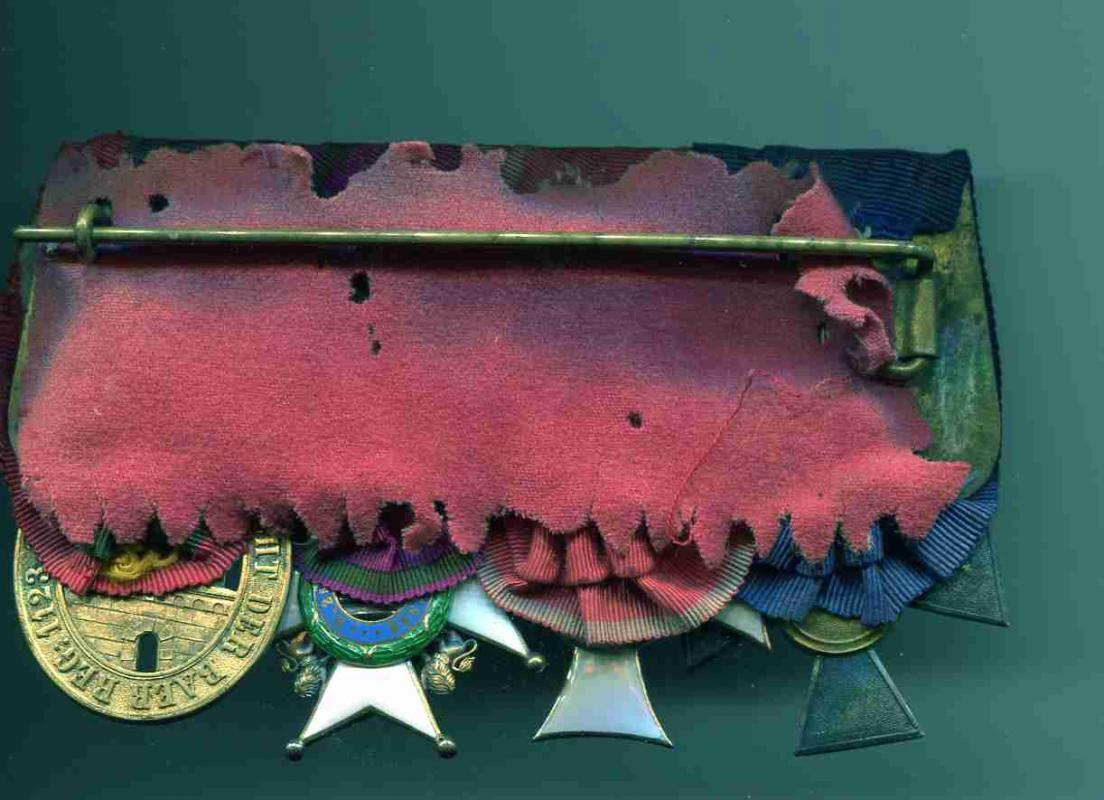 0
0 -
LD1, HP3a, EH3a, AB3a should pop up. Not a military official--no 1897 Centenary Medal, so either a dR/dL officer with a day job, or a retired dR/dL officer in non-Prussian civil service....
I didn't think it was possible to identify the recipient. The SEHO is rather small which makes me believe the bar is 1860-70 and as you pointed out no 1897 Centenary. Thanks Rick in advance if you come across any further info on the bar. Possible to be Prussian, receiving a higher grade Crown & Red Eagle.
0 -
My small contribution.
Not so much a collector of bars but this way the only way to be certain of having a genuine Anhalt Bear.
The old frayed soiled ribbons suggested it had not been tampered with. Unfortunately no I'd
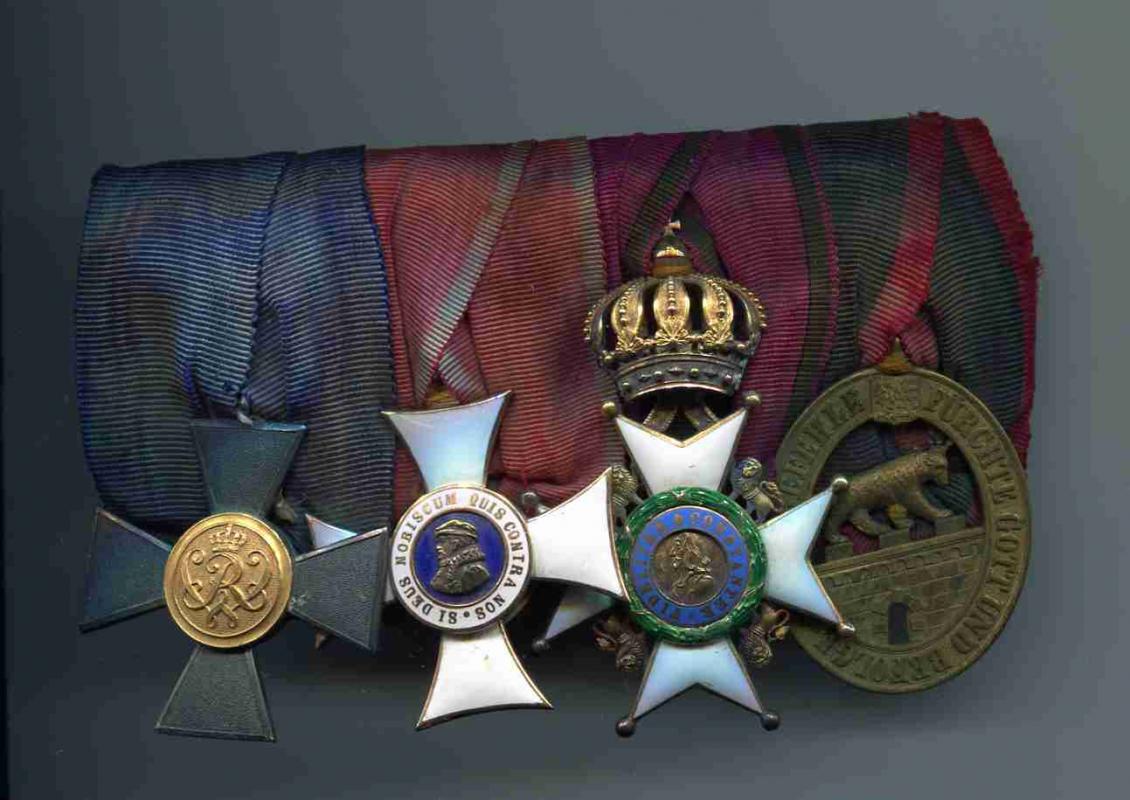 0
0 -
The medal of Alphonse XII will be of silver and or white metal, circular of 35 millimeters of diameter, with a button in the top part for which a long ring for the ribbon. In the obverse the bust of the King Alphonse XII and around the following inscription: ALFONSO XII, A LOS EJÉRCITOS EN OPERACIONES (ALFONSO XIIth, TO THE ARMIES IN OPERATIONS). In the back it will have a circular border of laurel, witha royal crown and in the center in three horizontal lines it will be read: VALOR, DISCIPLINA, LEALTAD (VALUE, DISCIPLINE, LOYALTY). The ribbn is yellow, with two red vertical lists, of 5 millimeters of width each one, equidistant other 5 millimeters of the edges
The culminating facts of the campaign will be represented by bars in which the name of the fact will register, saving itself the Government the faculty to determine the battles, sites of squares or operations that by his importance deserve to be recorded in the bar
To have right to the use of the medal, it will be necessary to go a year of operations or of garrison in strong squares, etc., nailed in territory of the war, at the head of the enemy, counting from January 1, 1875 .To have been injured. To go six months of operations or harness of the expressed form, having been present in addition at three actions of war.
That is really great you were able to provide the info in detail what one had to do to receive the medal and that it was the individual soldier to determine which battle clasps he was to receive and right to wear. Thanks for that great information.

Sincerely
Yankee
0 -
For the Medal of Alfonso XII (date of creation and inscription)
8.9.1875: Pamplona, Cantavieja, Treviño y Seo de Urgel31.12.1875: Miravalles27.3.1876: Oria y Elgueta8.4.1876: Olot, Junquera, Peña-Plata, Vera, Santa Bárbara y Estella13.6.1876: Guetaria y Cantabria30.4.1880: Esquinza-Oteiza y Líneas de OrioFor the Civil War Medal of 1873-1874 (date of creation and inscription)13.6.1876: Sevilla, Valencia, Cartagena, Velavieta, Muru, Puente de Guardiola, Castellar de Nuch, San Marcos y San Marcial, Hernani e Irún.24.12.1878: Cantabria, Cádiz y Mediterráneo.11.10.1879: Cantabria y Carraca (for the Navy).15.3.1881: Sarriá.10.12.1892: Arés de Maestre.Also please see:
http://coleccionesmilitares.com/medallas/texto/ma12.htm
and
Thanks ever so much for providing a list of bars for each medal. Both medals are very similar in design and the reverse on both have the same dedication. What was the criteria of awarding the medals and how did it differ from each other? Was thinking perhaps it was the awarding of the campaign bars that would be the deciding factor which medal the recipient was to receive.I read that the medals were given to all who participated in the conflict however the medals are not common to support such a belief especially the medal for the Civil War 1873-1874. What would be the most bars a soldier could receive? The scan that you provided illustrates 13 bars is for show or somebody had that combination. Great web site!!!
Sincerely
Yankee
0 -
Greetings
Can anybody provide a list of named bars that were awarded on the 1875 medal of Alfonso XII also a
list to the Civil War medal of 1873-1874. Thanks in advance
Estella, Junquera, Monte-Jura, Santa Barbara, Oria, Pamplona, Cantavieja, Miravalles, Eigueta, Trevino, PenaPlata. All I came up with.
Sincerely
Yankee
0




Knights Cross of the Iron Cross
in Germany: All Eras: The Iron Cross
Posted
I appreciate that, need to tell the poor guy this.